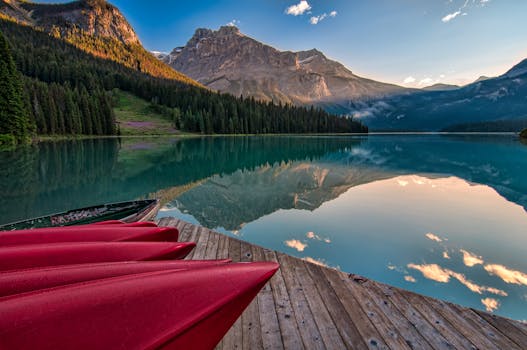Photographing Mountain Landscapes: Tips to Capture Beauty
Mountain landscapes offer some of the most breathtaking views on Earth, making them a favorite subject for photographers. From the jagged peaks of the Rockies to the serene slopes of the Alps, capturing the essence of these majestic formations requires skill, patience, and a keen eye for detail. This article provides valuable tips and insights to help you photograph mountain landscapes effectively.
Understanding the Best Time to Shoot
Timing is crucial when it comes to landscape photography. The quality of light can dramatically change the mood and appearance of your images. Here are some key times to consider:
- Golden Hour: The hour after sunrise and before sunset provides soft, warm light that enhances the colors and textures of the landscape.
- Blue Hour: The period just before sunrise and after sunset offers a cooler, more ethereal light that can create dramatic effects.
- Weather Conditions: Overcast days can provide even lighting, reducing harsh shadows and allowing for more detail in the mountains.
Choosing the Right Equipment
While you can capture stunning mountain landscapes with any camera, having the right equipment can make a significant difference. Consider the following:
- Camera: A DSLR or mirrorless camera with manual settings will give you more control over your shots.
- Lenses: A wide-angle lens (16-35mm) is ideal for capturing expansive landscapes, while a telephoto lens (70-200mm) can help isolate specific features.
- Tripod: A sturdy tripod is essential for long exposures, especially in low light conditions.
- Filters: Polarizing filters can reduce glare and enhance colors, while neutral density filters allow for longer exposures in bright conditions.
Composing Your Shot
Composition is key to creating visually appealing photographs. Here are some techniques to consider:
- Rule of Thirds: Divide your frame into a 3×3 grid and place key elements along the lines or at their intersections to create balance.
- Leading Lines: Use natural lines in the landscape, such as rivers or trails, to guide the viewer’s eye through the image.
- Foreground Interest: Including elements in the foreground, such as rocks or flowers, can add depth and context to your landscape.
- Framing: Use trees or other natural elements to frame your subject, drawing attention to the mountains.
Post-Processing Techniques
Post-processing is an essential part of modern photography. It allows you to enhance your images and bring out the beauty of the landscape. Here are some tips:
- Adjust Exposure: Fine-tune the exposure to ensure that highlights and shadows are balanced.
- Enhance Colors: Use saturation and vibrance adjustments to make the colors pop without looking unnatural.
- Sharpening: Apply sharpening to bring out details in the mountains, but be careful not to overdo it.
- Crop Wisely: Don’t hesitate to crop your images to improve composition, but maintain the original aspect ratio when possible.
Case Studies: Successful Mountain Landscape Photographers
Many photographers have made a name for themselves by capturing stunning mountain landscapes. For instance, Ansel Adams is renowned for his black-and-white images of the American West, particularly Yosemite National Park. His use of light and shadow, along with meticulous darkroom techniques, set a standard for landscape photography.
Another example is Galen Rowell, who combined adventure with photography, often climbing remote peaks to capture unique perspectives. His work emphasizes the importance of being in the right place at the right time, showcasing how preparation and spontaneity can lead to extraordinary results.
Conclusion: Capturing the Majesty of Mountains
Photographing mountain landscapes is both an art and a science. By understanding the best times to shoot, choosing the right equipment, composing your shots thoughtfully, and utilizing post-processing techniques, you can create stunning images that capture the beauty of these natural wonders. Remember to draw inspiration from renowned photographers and continuously practice your skills. With patience and dedication, you can transform your mountain photography into a captivating visual narrative that resonates with viewers.
